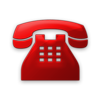Malocclusion – is not a “verdict”!
 Straight teeth line is not only a beautiful smile, first of all –it is health. Even to maintain good oral hygiene is much easier and more enjoyable with straight teeth line. But what should you do if there is overbite? Orthodontic treatment is optimal solution. And it is better not to postpone the treatment, because misplaced teeth cause an excessive stress on the joints of the jaw, and may eventually develop serious system violations. Correction of malocclusion is necessary and is possible at any age, the main thing is the health of dental system and organism as a whole.
Straight teeth line is not only a beautiful smile, first of all –it is health. Even to maintain good oral hygiene is much easier and more enjoyable with straight teeth line. But what should you do if there is overbite? Orthodontic treatment is optimal solution. And it is better not to postpone the treatment, because misplaced teeth cause an excessive stress on the joints of the jaw, and may eventually develop serious system violations. Correction of malocclusion is necessary and is possible at any age, the main thing is the health of dental system and organism as a whole.
Orthodontics (gr. orthos – direct, lat. dens, dentis – tooth) – is a special branch of dentistry which deals with diagnostics, treatment and prevention of malocclusion, as well as studying the causes of these disorders. However, effective orthodontics can be only under the supervision of highly qualified specialists – orthodontists. Nowadays for correction of occlusion there are used the most advanced methods of treatment.
The steps of correction of malocclusion.
The correction of malocclusion is gradual and long-term treatment, which includes 3 stages:
1. Preparation for orthodontic treatment.
The preparation for orthodontic treatment begins with diagnostics and planning. This step includes the making of two x-rays: orthopantomogram panoramic image of the jaws) and telerentgenogram (radiograph of the skull in lateral proection), that can show all the teeth including unerupted. Next step is the making of dental impression that forms an imprint, which can then be used to make a cast of the dentition. With casts and x-rays orthodontist studies the function of joints and muscles, as well as the facial aesthetics (the shape of a face oval, the size of the nose, lips and chin). Diagnostics is necessary to identify the causes of malocclusion and to determine the extent of displacement of the teeth or jaws. And on the Based on these results, the doctor makes the most effective treatment plan.
The training also includes oral cavity sanation and teeth cleaning.
2. Treatment.
Treatment of malocclusion is based on the movement of the teeth from the wrong position – in a physiologically correct. There are several methods you can use to achieve the desired result:
• myotherapy
• instrumental treatment
• complex treatment
Myotherapy – a set of exercises, that helps to normalize the tone of masticatory and facial muscles. This method is most effective during the growth of milk teeth, up to 6 years. The set of exercises is selected individually for each patient by orthodontist or speech therapist and must be done daily under the parental supervision. After the age of 6-7 years myotherapy is used as an auxiliary method in conjunction with the appliance and comprehensive treatment.
Appliance method – teeth reposition treatment using the orthodontic appliances. This method gives the opportunity to change the shape of the jaw, stimulating or restraining its growth.
Orthodontic appliances for malocclusion correction can be: removable (plates, trainers, mouthguards) and fixed (braces).
The main difference between them is that plates, trainers and mouthguards should be removed for eating, oral hygiene or correction of appliance, and braces are fixed once and till the end of orthodontic treatment.
Removable appliances can be used for bite correction until the age of 11-12 years. At older ages the most effective are non-removable appliances. For example, bracket systems can correct bite at all ages.
Complex treatment – implies collective work of orthodontist with the doctors of other specialties (orthopedics and surgery, etc.) to achieve the desired result.
Advice: During the orthodontic treatment it is necessary to make regular visits to your doctor, to comply strictly with all his recommendations and comply with proper oral hygiene. Moreover, you need to brush your teeth after every meal with special toothbrushes and more carefully than usual.
3. Retention (final) stage of treatment.
Orthodontic treatment ends with retention period, to keep the teeth in its right position.
Retainers can be:
-Adjustable – mouthguards, trainers, records and other orthodontic appliances, which are removed before eating and brushing your teeth.
-Fixed – fiberglass or metal structures stably fixed on the teeth.
The duration of retention period depends on: the type and duration of orthodontic treatment, the patient’s age, and presence of somatic diseases. It is always determined by the attending orthodontist.







